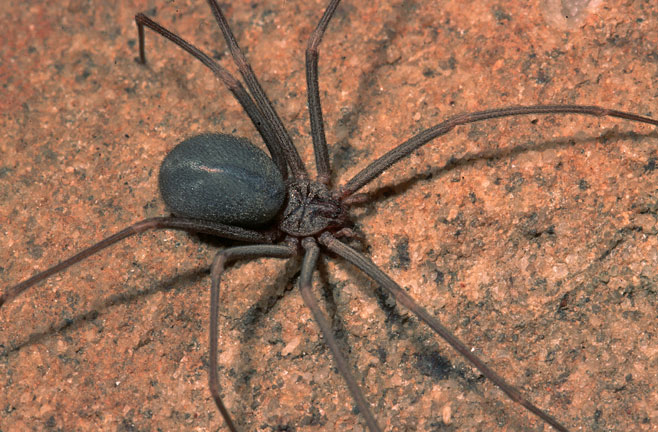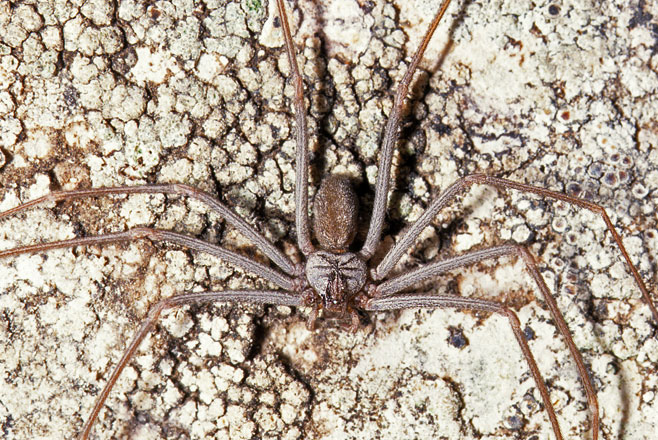|
Loxosceles (violin spiders) Life
> Eukaryotes
>
Opisthokonta >
Metazoa
(animals) > Bilateria > Ecdysozoa > Panarthropoda > Tritocerebra >
Arthropoda > Arachnomorpha > Cheliceriformes > Chelicerata > Euchelicerata
> Arachnida > Araneae
> Araneomorpha > Family: Sicariidae
See also
violin spider bites
Loxosceles can be grouped into cavernicolous (cave dwelling) and savannah
species. One of the three cavernicolous species, Loxosceles parrami, associated with
mining areas, has been artificially introduced into Gauteng homes and is responsible for
many cases of human envenomations in the area. Loxosceles is uncommon within 20 -
50 kilometres of Cape Town and bites by this spider appear to be translocations.
 |
|
Loxosceles
sp. (Violin spider). [image N. Larsen ©] |
 |
|
Loxosceles
sp. (Violin spider). [image N. Larsen ©] |
Loxosceles are free ranging and nocturnal using only a few strands of silk as a
retreat in caves or under rocks. Its free-ranging behaviour is what distinguishes it from
the Pholcidae that are web-bound. Loxosceles are small with a body
length of about 8 mm and long slender legs about 18 mm long. The carapace is relatively
flat and slightly longer than wide and most species bear the characteristic dark
violin-shaped marking. The cylindrical /oval abdomen is either plain or marked with light
and dark patterns. In some species sand particles adhere to the cuticle but not to the
same extent as Sicarius.
The eyes are arranged in 3 diads (contiguous groups of 2), closely spaced in a recurved
row (where the outer edges of the row are placed behind the central part).
Loxosceles produces 3 to 4 egg sacs after a gestation period of 3 months, each
containing about 15 eggs. The spiderlings mature after about a year and live for about 3
years.
Text by Norman Larsen ©
|
